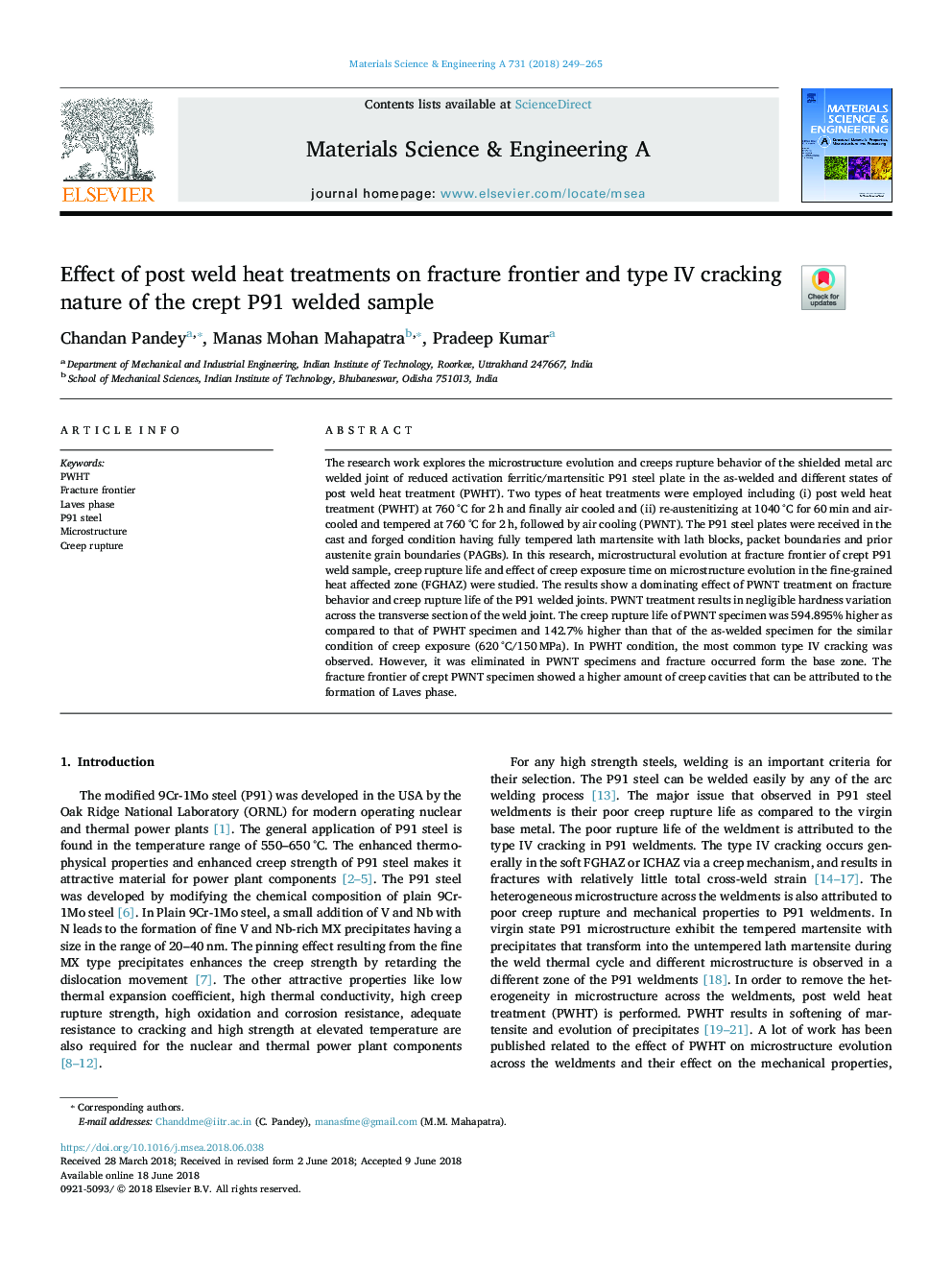| Article ID | Journal | Published Year | Pages | File Type |
|---|---|---|---|---|
| 7971715 | Materials Science and Engineering: A | 2018 | 17 Pages |
Abstract
The research work explores the microstructure evolution and creeps rupture behavior of the shielded metal arc welded joint of reduced activation ferritic/martensitic P91 steel plate in the as-welded and different states of post weld heat treatment (PWHT). Two types of heat treatments were employed including (i) post weld heat treatment (PWHT) at 760â¯Â°C for 2â¯h and finally air cooled and (ii) re-austenitizing at 1040â¯Â°C for 60â¯min and air-cooled and tempered at 760â¯Â°C for 2â¯h, followed by air cooling (PWNT). The P91 steel plates were received in the cast and forged condition having fully tempered lath martensite with lath blocks, packet boundaries and prior austenite grain boundaries (PAGBs). In this research, microstructural evolution at fracture frontier of crept P91 weld sample, creep rupture life and effect of creep exposure time on microstructure evolution in the fine-grained heat affected zone (FGHAZ) were studied. The results show a dominating effect of PWNT treatment on fracture behavior and creep rupture life of the P91 welded joints. PWNT treatment results in negligible hardness variation across the transverse section of the weld joint. The creep rupture life of PWNT specimen was 594.895% higher as compared to that of PWHT specimen and 142.7% higher than that of the as-welded specimen for the similar condition of creep exposure (620â¯Â°C/150â¯MPa). In PWHT condition, the most common type IV cracking was observed. However, it was eliminated in PWNT specimens and fracture occurred form the base zone. The fracture frontier of crept PWNT specimen showed a higher amount of creep cavities that can be attributed to the formation of Laves phase.
Related Topics
Physical Sciences and Engineering
Materials Science
Materials Science (General)
Authors
Chandan Pandey, Manas Mohan Mahapatra, Pradeep Kumar,
